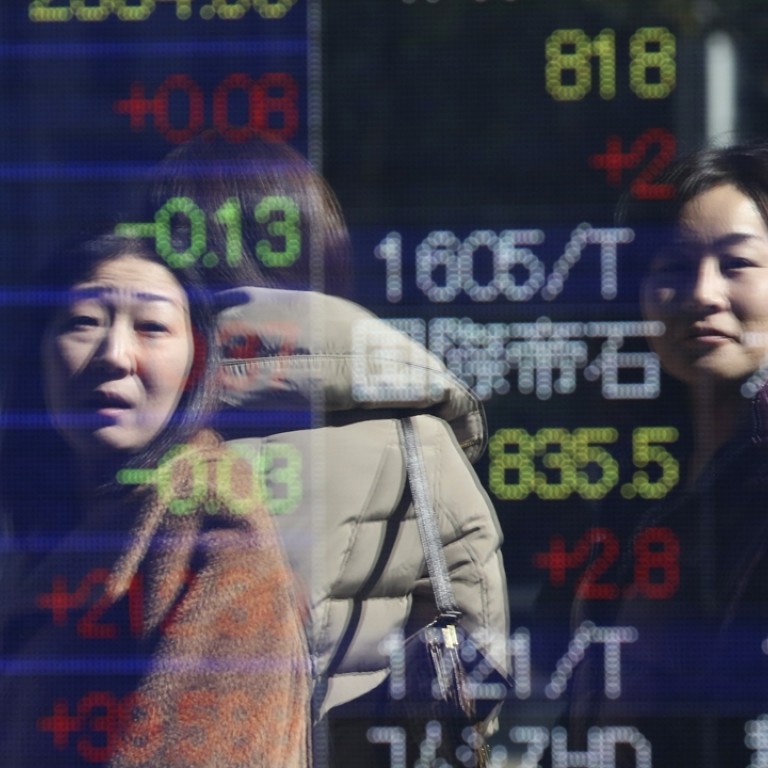
The dawn of negative government bond yields spells trouble for global banks, money market funds
The collapse in the yields on some of the world’s most actively traded government bonds knows no bounds.
On Tuesday, Japan sold 10-year government debt at a negative yield, becoming the second country after Switzerland to issue benchmark government debt with a yield below zero, and highlighting the seeming absurdity of a bond market in which investors are willing to pay to lend money for a decade to the world’s most heavily indebted advanced economy.
While short-term speculators, who hold the bonds for a brief period, accounted for nearly all the buying, the rapidly growing universe of negative yields - which now account for as much as one third of developed market government bonds included in JP Morgan’s sovereign bond indices (up from one-sixth at the end of last year) - is dangerously distorting financial markets and inflicting severe pain on banks and money market funds.
The dramatic decline in bond yields is the result of central banks’ ultra-loose monetary policies
The dramatic decline in bond yields is the result of central banks’ ultra-loose monetary policies.

While markets have hitherto goaded central banks into implementing ever looser monetary policies, confidence in the effectiveness and credibility of these policies took a severe knock in late January when the Bank of Japan (BOJ) joined the negative rate club, triggering a sharp sell-off in the shares of banks - particularly European ones - because of concerns about the impact of negative rates on lenders’ profitability.
Eurozone banks’ stocks are still down more than 15 per cent this year while Japanese money market funds have come under severe strain. Moody’s, the rating agency, warned last week that “the ultimate survival of the industry is in jeopardy.”
However investors are displaying a somewhat schizophrenic attitude towards central banks: while there has been a fierce backlash against negative rates, markets are still clamouring for yet more stimulus in the absence of coordinated multilateral fiscal actions to boost growth in the world economy.
Indeed investors expect the European Central Bank (ECB) to trim its deposit rate by a further 10 basis points to minus 0.4 per cent at its closely-watched policy meeting next Thursday. The eurozone economy slipped back into deflation last month, with the core inflation rate, which excludes volatile food and energy prices, falling to 0.7 per cent, roughly one third of the ECB’s target.
This is fuelling speculation that Germany’s 10-year bond yield, which currently stands at just 0.17 per cent (a dramatic 45 basis point drop since the start of this year), will turn negative in the coming days. Half of all government bonds in the eurozone already carry sub-zero yields.
The big question is how much scope there is for yields to be dragged deeper into negative territory and whether buyers of negative-yielding bonds - who take an extremely pessimistic view about the prospects for economic growth and inflation - may have misjudged the market.
That the plunge in bond yields has gone too far and is wreaking havoc on banks’ earnings are not in dispute.
Even the ECB is concerned about the effects of negative rates. On Wednesday, Benoit Coeure, an ECB board member, said the ECB is “studying carefully the schemes used in other [countries] to mitigate possible adverse consequences for the bank lending channel.”
Yet given the downturn in emerging markets (particularly in China), the collapse in oil prices, a lacklustre recovery in the US and slowing growth in the eurozone, there is significant scope for yields to fall further as investors fret about the health of the global economy.
Still, it would not take a lot for the collapse in yields to quickly unwind.
There is a growing sense that the extremely bearish mood in markets right now is overdone – particularly when it comes to fears about a US recession.
If oil prices stabilise - Brent crude, the international benchmark, is up 32 per cent since January 20 - and economic data in the US proves stronger than expected, sentiment towards the global economy could improve, triggering an increase in bond yields.
In mid-April last year, the German 10-year yield looked like it was about to dip into negative territory. Yet by early June it had reached 1 per cent as the outlook for growth and inflation suddenly improved.
Investors bet on persistently negative rates at their peril.
Nicholas Spiro is managing director of Spiro Sovereign Strategy

